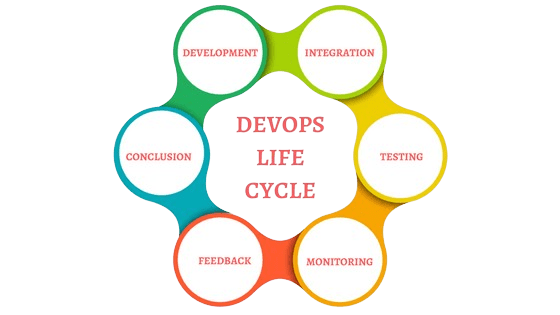
- Introduction
- What is the DevOps Periodic Table?
- Understanding DevOps Practices
- Key Elements of the DevOps Periodic Table
- The Role of Automation in DevOps
- DevOps Tools Categorized by the Periodic Table
- How to Implement DevOps Practices
- Conclusion
Introduction
In today’s fast-paced digital landscape, organizations strive to streamline their software development and deployment processes to ensure efficiency, reliability, and scalability. DevOps has emerged as a transformative approach that bridges the gap between development and operations teams, fostering collaboration, automation, and continuous delivery. To better understand and implement what is DevOps the DevOps Periodic Table provides a structured framework that categorizes essential components, tools, and methodologies. Modeled after the traditional periodic table of elements, this visual representation simplifies the complex DevOps ecosystem, enabling teams to adopt best practices and select appropriate tools for their workflows.
What is the DevOps Periodic Table?
- The DevOps Periodic Table is a visual representation and a conceptual framework that categorizes the key components, tools, practices, and methodologies involved in the DevOps lifecycle.
- Modeled after the traditional periodic table of elements, this table provides a structured way to organize the essential elements of DevOps Training, such as automation, collaboration, continuous integration, testing, deployment, monitoring, and security.
- The purpose of the DevOps Periodic Table is to help organizations navigate the complex landscape of DevOps practices and tools.
- It simplifies the understanding of the interconnected elements that drive DevOps transformations by breaking down the lifecycle of software development, deployment, and operations into key categories. These elements work together to enhance the speed, quality, and reliability of software delivery.
- The table also allows teams to quickly identify which tools and practices they need to integrate into their workflows based on their specific needs, and it facilitates a more streamlined approach to implementing DevOps strategies.
- Slack, Microsoft Teams, Jira – Facilitate communication between development and operations teams.
- Confluence – Organizations that need to build custom applications or host workloads without managing physical hardware.
- Git, GitHub, GitLab, Bitbucket –Tools that allow developers to track and manage code changes and collaborate efficiently.
- Jenkins, Travis CI, CircleCI, GitLab CI – Automate the integration of code into the shared repository, ensuring that issues are detected early.
- Spinnaker, Argo CD, Jenkins, GitLab CI – Automate the process of deploying code to various environments, ensuring that code is always in a deployable state.
- Docker, Kubernetes, OpenShift – Help package and deploy DevOps Course applications as containers, allowing for easier management, scaling, and portability.
- Ansible, Chef, Puppet – Automate the configuration and management of infrastructure, ensuring that the environment remains consistent.
- Terraform, AWS CloudFormation, Pulumi – Enable the automation and versioning of infrastructure, allowing teams to treat infrastructure as code.
- JUnit, Selenium, JUnit, PyTest – Tools that help automate the testing process, ensuring code quality and preventing regressions.
- Prometheus, Grafana, ELK Stack (Elasticsearch, Logstash, Kibana) – Monitor applications and infrastructure, providing real-time insights into the performance and health of systems.
- SonarQube, OWASP ZAP, Aqua Security – Automate security checks within the pipeline, ensuring that vulnerabilities are identified early.
- Jira, Confluence, Slack – Facilitate communication and collaboration between teams, ensuring everyone is on the same page.
- Continuous Integration/Continuous Delivery (CI/CD): Automation in CI/CD pipelines ensures that code changes are automatically built, tested, and deployed and How It Helps Businesses as soon as they are committed. This eliminates the need for manual testing and deployment, reducing errors and accelerating the release process.
- Automated Testing: Automated testing frameworks run tests on every code commit, ensuring that code quality remains high and issues are detected early in the development process. This reduces the likelihood of defects being introduced into production.
- Monitoring and Alerting: Automation is also crucial in the monitoring and alerting process. Tools like Prometheus and Grafana continuously monitor system performance and send real-time alerts if any issues arise, allowing for faster incident resolution.
- Version Control: Git, GitHub, GitLab, Bitbucket – Allow developers to manage source code and collaborate effectively.
- Code Editors/IDEs: Visual Studio Code, IntelliJ IDEA, Eclipse – Provide environments where developers write and test code.
- CI/CD Tools: Jenkins, CircleCI, GitLab CI – Automate Key Artifacts in DevOps process of building, testing, and deploying code.
- Artifact Repositories: Nexus, Artifactory – Store and manage build artifacts to ensure consistency in deployments.
- Ansible, Puppet, Chef – Automate the configuration of systems and applications, ensuring they are consistent and repeatable.
- Unit Testing: JUnit, PyTest – Automate unit testing to ensure code functionality.
- Integration Testing: Selenium, TestNG – Test the integration of different components of the application.
- Performance Testing: JMeter, LoadRunner – Test the performance and scalability of the application.
- Docker, Kubernetes – Package applications as containers and automate their deployment and management across different environments.
- Prometheus, Grafana, ELK Stack (Elasticsearch, Logstash, Kibana) – Collect and visualize metrics, logs, and performance data from applications and infrastructure.
- SonarQube, OWASP ZAP, Aqua Security – Ensure that security is embedded into the DevOps pipeline by automating security scans and vulnerability checks.
- Jira, Confluence, Slack – Foster communication and collaboration among development, operations, and other stakeholders.
- Cultivate a DevOps Culture: The foundation of DevOps is a culture of collaboration between development, operations, and other teams. Break down silos and promote shared responsibilities. Encourage transparency, trust, and continuous learning across teams.
- Adopt Agile and Lean Methodologies: Implement continuous integration and delivery pipelines to automate the process of integrating, testing, and deploying code. Tools like Jenkins and GitLab CI/CD can help create automated workflows for building and deploying code efficiently.
- Automate Infrastructure Management: Use Infrastructure as Code (IaC) tools like Terraform or Ansible to manage your infrastructure. Build DevOps Resume this ensures consistency across different environments and allows for scalable, repeatable infrastructure provisioning.
- Automate Testing: Incorporate automated testing into the CI/CD pipeline. This includes unit tests, integration tests, and performance tests. Automated testing tools like Selenium and JUnit help ensure the software quality is maintained throughout the development process.
- Monitor Continuously: Implement continuous monitoring of applications and infrastructure using tools like Prometheus, Grafana, and the ELK Stack. This allows for real-time insights into system health and performance.
- Implement Security Practices (DevSecOps): Integrate security checks early in the development lifecycle using automated security testing tools like SonarQube and OWASP ZAP. This ensures that vulnerabilities are detected and resolved early in the process.
To Explore DevOps in Depth, Check Out Our Comprehensive DevOps Online Course To Gain Insights From Our Experts!
Understanding DevOps Practices
DevOps is a set of practices and cultural philosophies that combine software development (Dev) and IT operations (Ops) to improve the overall efficiency of the software development lifecycle (SDLC). It aims to enhance the collaboration between developers and operations teams, promoting the use of automation, continuous feedback, and a faster release cycle. The core principle of is that development and operations teams should work DevOps Architect together throughout the entire software lifecycle, from planning and development to deployment and monitoring.
DevOps practices are built around the concepts of Continuous Integration (CI), Continuous Delivery (CD), Infrastructure as Code (IaC), Automated Testing, and Monitoring. These practices enable teams to work more collaboratively, deploy software more frequently, and respond quickly to changing requirements or issues. Continuous integration ensures that developers’ code changes are integrated into the main codebase regularly, reducing integration problems and improving code quality. Continuous delivery extends this practice by automating the deployment of code, allowing software to be released at any time. Infrastructure as Code helps teams manage their infrastructure using version-controlled code, enabling consistency and scalability. Automated testing plays a vital role in maintaining quality, while continuous monitoring ensures that applications are performing optimally in production environments.

DevOps also embraces a culture of shared responsibility, with both development and operations working together to meet common goals. This includes not only technical practices but also the adoption of a collaborative mindset that facilitates quicker problem-solving, continuous learning, and faster issue resolution. By integrating these practices, accelerates the time-to-market for software, reduces the risk of deployment failures, and enhances the quality and reliability of applications.
Key Elements of the DevOps Periodic Table
The DevOps Periodic Table includes various practices, tools, and technologies that make up the foundation of the DevOps methodology. The key elements are categorized based on their role in the DevOps lifecycle, including development, integration, deployment, monitoring, and security. Some of the key elements of the DevOps Periodic Table include:
Collaboration Tools:(IaaS)
Version Control:
Continuous Integration (CI):
Continuous Delivery (CD):
Containerization:
Configuration Management:
Infrastructure as Code (IaC):
Automated Testing:
Monitoring and Logging:
Security (DevSecOps):
Collaboration and Documentation:
Are You Interested in Learning More About DevOps? Sign Up For Our DevOps Online Course Today!
The Role of Automation in DevOps
Automation is a key enabler of DevOps practices. It plays a central role in reducing manual intervention, speeding up workflows, and ensuring consistency and reliability throughout the software development lifecycle. Automation allows development and operations teams to integrate, test, deploy, and monitor software continuously and reliably.
By automating repetitive tasks and processes, ensures that software delivery is more efficient, faster, and less prone to human error. It helps organizations keep up with fast-changing market demands and improves overall productivity by enabling teams to focus on innovation rather than manual tasks.
DevOps Tools Categorized by the Periodic Table
DevOps tools are categorized based on their specific functions. The DevOps Periodic Table categorizes tools into different stages such as development, integration, testing, deployment, monitoring, and security. Some examples of tools categorized by the periodic table are:
Development Tools:
Continuous Integration and Continuous Delivery:
Configuration Management:
Testing:

Containerization and Orchestration:
Monitoring and Logging:
Security:
Collaboration:
Looking to in Master DevOps? Discover the DevOps Master Training Available at ACTE Now!
How to Implement DevOps Practices
Implementing DevOps practices requires a combination of cultural transformation, process adjustments, and tool integrations. Here’s how to implement DevOps successfully:
By following these steps and integrating the appropriate tools, organizations can successfully implement DevOps practices, leading to faster, more reliable software delivery and a more collaborative working environment.
Want to Learn About DevOps? Explore Our DevOPs Interview Questions & Answers Featuring the Most Frequently Asked Questions in Job Interviews.
The Role of Cloud Computing in Business Continuity and Disaster Recovery
Cloud computing plays a crucial role in ensuring business continuity and disaster recovery. Traditional IT infrastructure often requires significant investment in backup and recovery solutions. However, cloud-based disaster recovery (DR) solutions provide cost-effective, scalable, DevOps Training and automated backup mechanisms to protect data and applications from failures, cyberattacks, and natural disasters. Cloud providers offer backup-as-a-service (BaaS) and disaster-recovery-as-a-service (DRaaS) to enable businesses to recover quickly and minimize downtime. By leveraging cloud computing, organizations can enhance resilience, maintain operations during crises, and safeguard critical data.
Conclusion
This structure of the DevOps Periodic Table alongside its detailed components and the practices involved ensures an efficient, scalable, and secure software development lifecycle. Through proper implementation, helps organizations achieve continuous improvement and adaptability in their software development and operational processes. The DevOps Periodic Table provides a comprehensive framework for understanding and implementing DevOps practices. Categorizing essential tools and methodologies, helps organizations navigate the complex DevOps landscape with clarity. DevOps fosters a culture of collaboration, automation, and continuous improvement, enabling teams to accelerate software delivery, enhance reliability, and ensure security. Through proper implementation of, organizations can achieve greater agility, efficiency, and innovation in their software development and operations.





